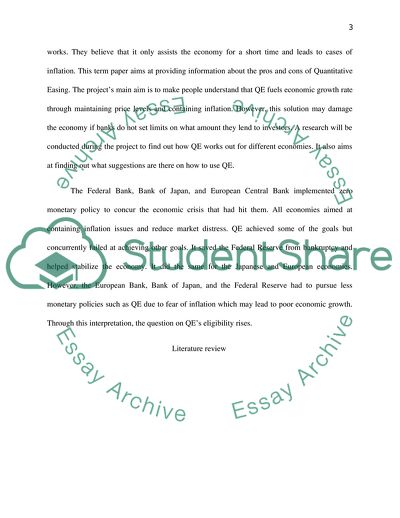Cite this document
(Through Quantitative Easing (QE), central banks buy long-term Essay, n.d.)
Through Quantitative Easing (QE), central banks buy long-term Essay. https://studentshare.org/finance-accounting/1809568-through-quantitative-easing-qe-central-banks-buy-long-term-government-bonds-with-newly-printed-money-this-raises-the-bonds-prices-lowers-their-yields-and-provides-a-helpful-boost-to-growth-when-central-banks-main-tool-the-short-term-inte
Through Quantitative Easing (QE), central banks buy long-term Essay. https://studentshare.org/finance-accounting/1809568-through-quantitative-easing-qe-central-banks-buy-long-term-government-bonds-with-newly-printed-money-this-raises-the-bonds-prices-lowers-their-yields-and-provides-a-helpful-boost-to-growth-when-central-banks-main-tool-the-short-term-inte
(Through Quantitative Easing (QE), Central Banks Buy Long-Term Essay)
Through Quantitative Easing (QE), Central Banks Buy Long-Term Essay. https://studentshare.org/finance-accounting/1809568-through-quantitative-easing-qe-central-banks-buy-long-term-government-bonds-with-newly-printed-money-this-raises-the-bonds-prices-lowers-their-yields-and-provides-a-helpful-boost-to-growth-when-central-banks-main-tool-the-short-term-inte.
Through Quantitative Easing (QE), Central Banks Buy Long-Term Essay. https://studentshare.org/finance-accounting/1809568-through-quantitative-easing-qe-central-banks-buy-long-term-government-bonds-with-newly-printed-money-this-raises-the-bonds-prices-lowers-their-yields-and-provides-a-helpful-boost-to-growth-when-central-banks-main-tool-the-short-term-inte.
“Through Quantitative Easing (QE), Central Banks Buy Long-Term Essay”. https://studentshare.org/finance-accounting/1809568-through-quantitative-easing-qe-central-banks-buy-long-term-government-bonds-with-newly-printed-money-this-raises-the-bonds-prices-lowers-their-yields-and-provides-a-helpful-boost-to-growth-when-central-banks-main-tool-the-short-term-inte.


